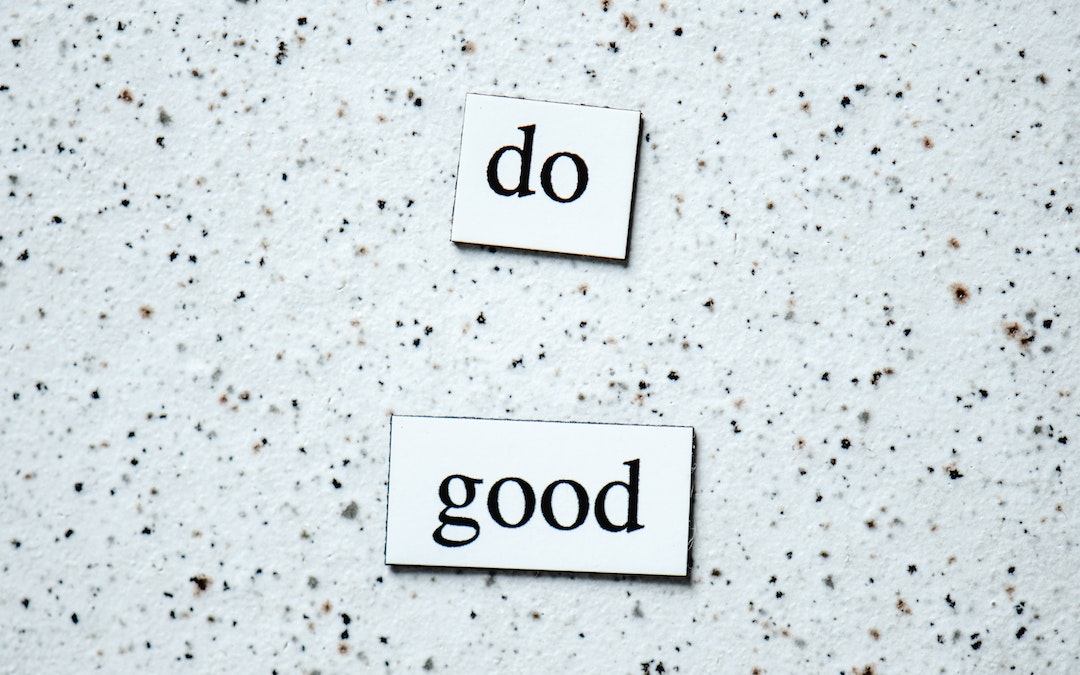Habit stacking is a straightforward and robust method for changing or introducing new habits. If you find it challenging to form new habits., know that you’re not alone. Our brains are naturally conditioned to repeat the patterns we are already familiar with. The more you repeat a behavior, the stronger the neuronal connections in your brain become [1]. In simple terms, we are programmed to repeat the behaviors we are comfortable with. When learning new behaviors and forming new habits, the brain must ‘learn’ to form new connections, and it may therefore take time to change the patterns that are already ingrained in our minds.
However, this doesn’t we will be stuck with our bad habits forever. Luckily, the brain is plastic and always capable of change, so long as we implement the right techniques. One solution to building new habits and making them stick is habit stacking. In this article, you’ll learn more about habit stacking and how you can start incorporating it into your life to develop healthy and lifelong habits. To facilitate this process, consider taking the HIGH5 strengths test. By understanding your unique strengths, you can tailor your habit-stacking approach to align with your natural talents, making the formation of new habits more intuitive and sustainable. The HIGH5 test provides invaluable insights into your strengths, allowing you to leverage them in creating habits that resonate with who you are.

What is habit stacking?
The phrase ‘habit stacking’ was first used by S.J Scott in his book Habit Stacking: 97 Small Life Changes That Take Five Minutes or Less [2]. The book suggests the readers create routines around habits that take minimal effort. Doing so will allow the small wins to build momentum so that they can remember and achieve them effortlessly. Habit stacking, also known as ‘habit chaining,’ is one of the most effective strategies for developing new habits. It involves selecting an existing routine that you currently do daily and then stacking your new behavior on top of it. It takes advantage of the already present strong synaptic connections to form a link between your existing habits and the new ones.
Habit stacking is a type of implementation intention that goes beyond simply associating a new habit with a particular location and time. Instead, it involves linking your new behavior to an existing routine. This process can be significantly enhanced by understanding your innate strengths through the HIGH5 test. For instance, if the test reveals that one of your top strengths is ‘Deliverer,’ you might find it particularly effective to stack new habits onto existing accomplishment-related routines. The HIGH5 assessment provides a framework for personalizing your habit-stacking approach, ensuring that your new habits are not just logically connected to existing ones, but also aligned with your natural tendencies and motivations. The technique includes organizing small actions into a routine that you attach to an existing habit in your day.
It helps your brain to remember the new pattern and connect your new behaviors to a current trigger. If you treat each behavior in your habit stack as separate actions, you need to set reminders to monitor each one. And as time goes by, you will find it extremely tedious and may give up in the end. By stacking the actions into a single habit, it will be easier to memorize and execute continuously. You may find habit stacking daunting at the beginning, but after doing it several times, you will realize it’s not as difficult as you imagined.
Pro Tip From HIGH5
Leverage your HIGH5 strengths in your habit stacking. If ‘Creativity’ is one of your top strengths, consider incorporating creative elements into your habit stack. For example, if you’re trying to build a habit of daily exercise, you could challenge yourself to invent a new workout routine each week.
13 ways how to build habit stacking routine and examples
1. Start with a simple and easy-to-complete habit
Making a new habit easy to complete is the easiest way to stick it. For instance, if you wish to read every day, set a target of reading 20 pages daily. Sure, you can read more, but as long as you finish 20 pages, check this off your list for the day. The basic idea is to establish an easy goal that will overcome resistance. When you get started, you will generally do more than expected.
2. Focus on small wins
Build your routine around behaviors that require less effort and use minimal willpower. For example, do ten push-ups, take a vitamin, or drink eight glasses of water. Commit to completing these actions for a week or two until this habit stack becomes natural. Then you can start incorporating more new behaviors into your habit stack.
3. Choose a time and location
Every habit stack needs to be anchored to a trigger. A trigger is explained as an existing routine or behavior you repeat every day, to which you can link the new behavior you wish to incorporate into the routine. Triggers are essential as most people cannot remember all their tasks without a reminder. So, triggers can prompt you to take action and complete essential tasks. The trigger has to be connected to a specific location, time, or both. For instance, if your goal is to read more, you can tell yourself “Every night when I go to bed, I will read 20 pages.” In this case, the established routine of going to bed is the trigger to which you link the new behavior you wish to implement.

4. Create a checklist
A habit stack’s most crucial component is the checklist. The checklist should include the sequence of the activities, how long each activity will take, and where and/or when you will perform them.It will help you eliminate any uncertainty about what you have to do when trying to complete an action. A tip when creating your checklist is to group the small behaviors in a sequence where they flow from one to the other smoothly without wasting any effort. For instance, when creating a morning routine, start the checklist with eating a healthy breakfast, and afterward meditate for ten minutes, then take a moment to make a plan for your daily tasks.
5. Hold yourself accountable
To develop a new routine, you need to hold yourself accountable for sticking to your goals. Unfortunately, most people fail to form new habits because it’s always easier and more comfortable to stay where you are in life. Making a personal commitment to do something is insufficient. Motivation doesn’t last forever. You can be highly motivated during the first few days, but your accountability and discipline determine if your new habits will stick or break. There are many ways to hold yourself accountable for the habits you’re creating, and understanding your strengths can make this process more effective and enjoyable.
The HIGH5 test can reveal strengths that naturally lend themselves to different accountability methods. For instance, if ‘Relationship’ is one of your top strengths, you might find it particularly motivating to share your progress with friends or recruit an accountability partner. If ‘Self-Believer’ is a key strength, you might prefer to track your progress privately, celebrating personal milestones. By aligning your accountability method with your strengths, as identified by the HIGH5 test, you’re more likely to stay committed to your new habits.

6. Create small and enjoyable rewards
Performing your habit stack is a significant achievement that you should celebrate. Rewarding yourself is a tremendous motivation to push you to complete your routine. The rewards can be anything from having a well-deserved break, enjoying a night out with your loved ones, or treating yourself to your favorite restaurant.
7. Focus on repetition
Over the first few weeks of establishing a habit stack, repetition is essential, as this is the key to instilling new patterns in your memory You must follow your schedule daily. Once you practice a new behavior repeatedly day in and day out, it will become embedded into your daily routine. Although repetition is essential, missing a day or two is not the end of the world. But once you start skipping routines, it will be easier and easier to stray from your goal. A golden rule is to never skip a task two times in a row.
8. Don’t break the chain
Develop a repeatable goal that you can complete as often as possible. Make sure that no excuses can stop you from completing it. The main focus is establishing a goal you can achieve even on a lazy day. One way to do this is to stick a calendar on your wall and mark a huge red X for each day you accomplish the habit. Visualizing your progress by marking Xs on the calendar will motivate you to continue completing the goal daily. The longer the unbroken string of red X’s, the more driven you are not to break the chain. The purpose of this method is to help you get rid of any possible excuses that might break the routine.
9. Expect setbacks
Even the most consistent person will encounter setbacks or struggles throughout their daily routine. Building good habits is undeniably tricky, and you’re bound to face some challenges. When this happens, you have two options: quit or overcome them. We hope you will choose the second option: to look for solutions to overcome these challenges.
10. Schedule the frequency of a stack
Depending on the positive habits you want to develop, some habits could happen daily, weekly, or monthly. Our recommendation is to start with a small daily habit stack first. Then, once familiar with this stack, you can create a habit stack for weekly or monthly while continuing your daily stack of habits. Weekly or monthly habit stacks are usually “check-in habits.” It includes important but easy-to-forget activities, such as setting a budget, reviewing credit card statements, or planning a dinner date.

11. Develop one routine at a time
In a research published in the European Journal of Social Psychology, the researcher, Phillippa Lally, found that it takes 18 to 254 days for a behavior to become permanent [3]. The findings suggest that we should avoid building more than one habit at a time. Each new activity makes it increasingly challenging for you to stick to your habits. Hence, you should only add a new habit to your stack when you can automatically perform the behavior without much effort. But, as the study above suggests, a person takes on average 66 days for a new action to become a habit. Therefore, how long you need to make a new behavior permanent differs from person to person.
12. Review your goals
We all have goals that we aspire to accomplish, no matter how ambitious or small. Unfortunately, life’s constant hustle and bustle can cause us to lose sight of our goals. You should allocate time monthly to review and reflect on your major goals. Is your habit stack too challenging to complete? How can you improve your habit stacks? Then make strategies to keep yourself on track and continue performing your habit stacks.
13. Set a timeline for yourself
Setting a specific time frame can be beneficial. It could be an arbitrary or genuine deadline like 30 days or before the end of the year. Establishing a timeline reinforces your commitment to practicing the new habits. Furthermore, giving yourself a time limit may make the journey feel less intimidating because there’s an endpoint. It also provides an ideal opportunity to pause and reflect on your progress.
Why is habit stacking important?
Habits shape and influence your life much more than you might imagine, as our brains tenaciously hold onto patterns we’ve built over the years. This is where the power of the HIGH5 strengths test comes into play. By identifying your core strengths, you can create habit stacks that are not just routine actions, but expressions of your innate talents. For example, if the HIGH5 test reveals ‘Strategist’ as one of your top strengths, you can build habit stacks that involve planning and foresight, making them feel more natural and rewarding.
This alignment between your habits and your strengths creates a powerful synergy, amplifying the positive impact of habit stacking on your life. More than 40% of your daily behaviors are habitual rather than intentional [4]. Habits grow increasingly powerful and more spontaneous, so we must ensure that we practice good and healthy habits.
Pro Tip From HIGH5
Review your HIGH5 strengths before creating new habit stacks. Look for ways to incorporate activities that utilize your top strengths into your daily routines. This will make your habit stacks more enjoyable and increase the likelihood of long-term success.
10 benefits of habit stacking
- Helping you become the person you most desire to be
- Allowing you to lead by example and positively influence the people around you
- Increasing the overall quality of your life by allowing you to be productive at what you do consistently
- Helping you to maintain a positive mindset and actions on days when you lack motivation
- Helping you develop good habits to replace the bad habits
- Understanding how your priorities fit together and using your time proactively to complete valuable tasks will bring you closer to your goals
- Helping you to clarify your values and ensure your daily activities align with your values, preferences, and priorities
- Building a new skill quickly through concentrated daily learning
- Allowing you to explore different activities to build skills and discover new things about yourself and others
- Automating your behavioral sequences prevents you from spending unnecessary time and effort on decision-making

How do you find positive triggers for the habit-stacking effect?
Identifying suitable triggers for your habit stack begins with understanding your existing habits, but it can be significantly enhanced by knowing your strengths. The HIGH5 test provides valuable insights into your natural tendencies, which can inform your choice of triggers. Start by making a list with three columns: your existing habits, daily occurrences, and your top strengths as identified by the HIGH5 test. Write down the habits you practice every day in the first column. Then, in the second column, write down everything that happens to you every day.
With these two lists in hand, you can start finding the appropriate place to introduce your new habit into your daily routine. This comprehensive approach allows you to identify triggers that not only fit into your current routine but also resonate with your innate strengths. For instance, if ‘Believer’ is one of your top strengths, you might find that moments of reflection or affirmation serve as powerful triggers for new habits. If you wish to develop triggers for your habit stacks, keep the following four criteria in mind:
- A trigger should be an already-established habit. It needs to be an activity that you do daily without missing, such as going to bed or eating breakfast
- A habit trigger can occur at a predetermined time each day. For example, in the morning when you get up or at lunch after you finish your meal. Whatever trigger you pick, it should be an automatic behavior.
- A trigger should be easy to accomplish. If the activity is complex, the trigger’s effectiveness will be reduced. For example, even if you read daily before bed, using it as a trigger is a mistake since you may sometimes skip it for specific reasons.
- A trigger should not be the beginning of a new habit. A permanent habit can take an average of 66 days to establish. It might take even longer for more demanding habits. Hence, you shouldn’t choose a new habit as a trigger unless you’re confident that you can practice it consistently every day.
Pro Tip From HIGH5
Use your HIGH5 strengths to create strength-based triggers. If ‘Empathizer’ is one of your top strengths, you could use moments of connection with others as triggers for new habits, such as practicing active listening or expressing gratitude.
How do you make your own template for habits?
Here is a quick and easy formula you can use to create a new habit stack:
After/Before [CURRENT HABIT], I will [NEW HABIT]
Some examples of habit using the formula above are as follows:
- Before I make my morning coffee, I will do a simple stretching exercise for one minute.
- Before I get on my bed, I will write in my journal five things I am grateful for today.
- After getting out of bed, I immediately change into workout clothes.
- After I wake up in the morning, I will hug my partner.
- After I finish bathing, I will spend a minute meditating.
- After I get out of my office after work, I will text my partner that I am coming back home.
Habit stacking is effective because your existing behaviors are already embedded into your brain. You have developed habits and behaviors that have been reinforced over time. Connecting your new behaviors to a current routine increases the odds of making the new behaviors stick. It allows you to capitalize on the intrinsic momentum created by one action leading to the next. After you have perfected this fundamental principle, you can start building larger habit stacks by linking the small habits together.
Habit stacking FAQ
What do stacking habits refer to?
Habit stacking, also known as ‘habit chaining,’ is one of the most effective strategies for developing new habits. It involves selecting an existing routine – a trigger – that you currently do daily and then stacking your new behavior on top of it. It takes advantage of the already present strong synaptic connections in your brain to form a link between your existing habits and the new ones.
How can I effectively incorporate habit stacking into my daily life?
In a hectic daily life, it can be easy to forget your new tasks before they are completely incorporated into your routine. A good tip to remember to carry out the new tasks or behaviors is to set external reminders to yourself at the time of your trigger, such as post-it notes, calendar entries, or alarms on your phone.
What happens if I forget or don’t have time to carry out the new routine?
Don’t worry, it’s perfectly okay to skip the new routine or activity once in a while. Just make sure it doesn’t happen frequently – try not to skip the activity more than two times in a row. Skipping the routines makes it harder to automate them, and over time you might even ‘unlearn’ the new habits by weakening the newly formed connections in your brain.
What is habit stacking for weight loss?
Losing weight and getting in shape is something many people have as a goal, but they find it hard to establish good routines in a busy everyday life. In this context, habit stacking is a powerful tool. Examples of habit stacking for weight loss include stretching, preparing your diet meals, recording the workouts you did, or creating a playlist of your favorite songs or podcasts. It’s a good idea to set aside specific times to perform these tasks, connected to everyday triggers, such as ‘Each day after dinner, I will go for a short run’, or ‘Instead of taking the bus to work, I will start biking.’
References:
- Wood, W., & Rünger, D. (2016). Psychology of Habit. Annual review of psychology, 67, 289–314. https://doi.org/10.1146/annurev-psych-122414-033417.
- Scott SJ. (2014). Habit Stacking: 97 Small Life Changes That Take Five Minutes or Less. Oldtown Publishing LLC.
- Lally, P., van Jaarsveld, C. H. M., Potts, H. W. W., & Wardle, J. (2010). How are habits formed: Modelling habit formation in the real world. European Journal of Social Psychology, 40(6), 998–1009. https://doi.org/10.1002/ejsp.674.
- Neal D, Wood W, Quinn JM. (2006). Habits–A Repeat Performance. Current Directions in Psychological Science. 2006;15(4):198-202. https://dx.doi.org/10.1111/j.1467-8721.2006.00435.x






